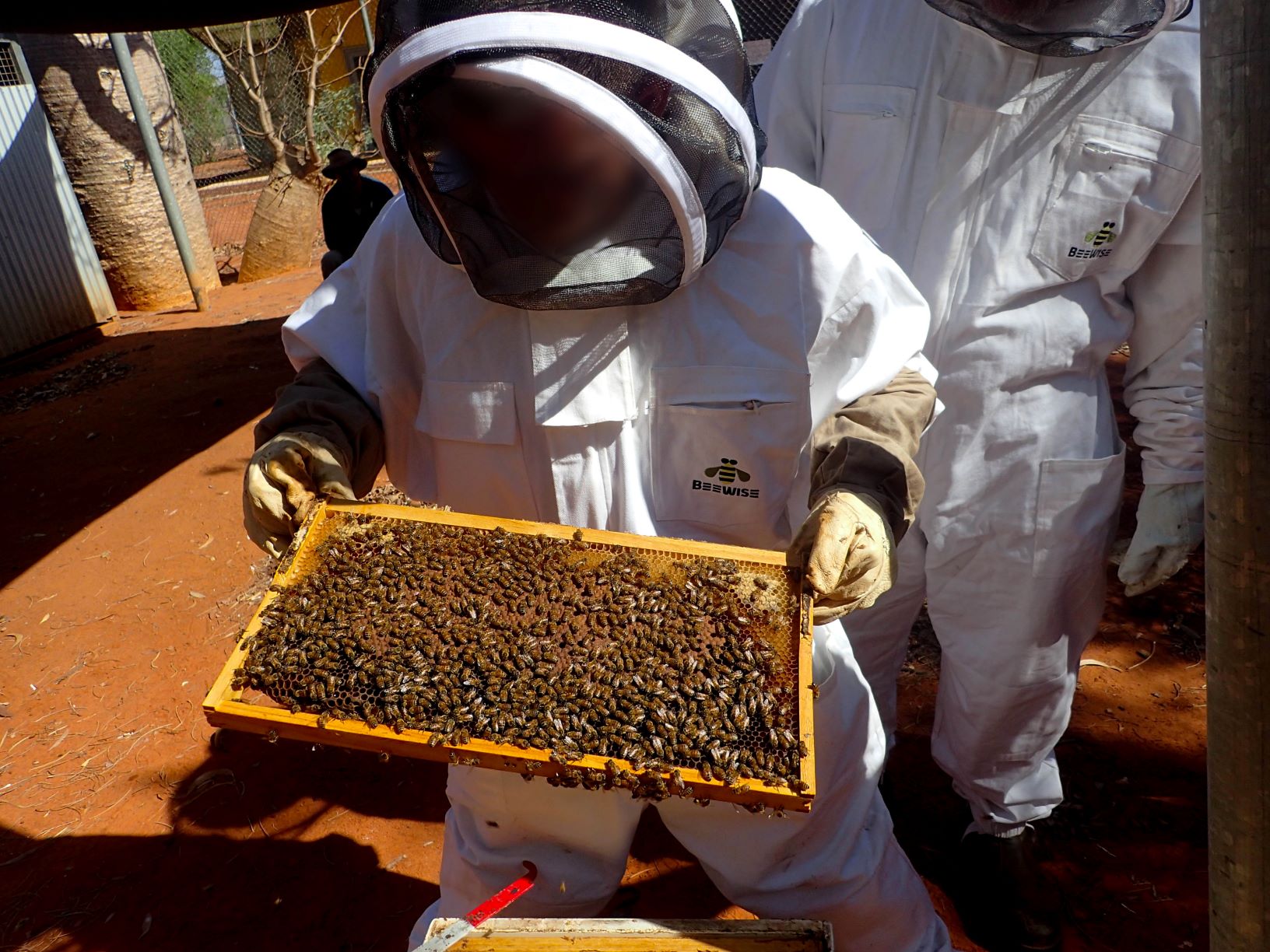
To facilitate education of the prisoners as well as creating a self-sustaining food source, West Kimberly Regional Prison is now home to over 100,000 bees.
To keep the bees happy and healthy the horticulture team at WKRP are learning how to create bee friendly gardens as part of a Tafe Certificate II in Rural Operations.
Once harvested, the honey is bottled and used on site with a goal to continue to expand the hive and eventually supply other sites around the custodial estate.
Assistant Superintendent, Leith (ACM) has already seen the program reap rewards, saying "We are trying to look at a different approach with some of our learning styles. Visual and hands on learning has proven to be an effective way in building confidence and promoting an interest amongst the prisoners when learning new skills. This type of learning makes things more realistic with prisoners being able to relate these skills to opportunities once released which can be very rewarding."
Satellite Trainer Jason is on hand to teach the prisoners how to care for their new residents.
"We also catch swarm bees in our area, which is a help to people who need to have bees removed, we re-queen and re-hive them in the prison," he said.
WKRP has collaborated with the Department of Primary Industries and Regional Development (DPIRD) to help keep the Kimberley free of threats to bees such as European and American foul brood, small hive beetle, varroa mite and chalkbrood.
"European honeybees are endangered so we are teaching the prisoners about the importance of bio-security," Jason said. "Five of our hives are sentinel hives, part of the National Bee Pest Surveillance Program set up to help guard WA’s precious honey bees from pest and disease threats, providing an early warning system to detect new bee pests and diseases.
"The sentinel hives have a beetle trap at the entrance of the hive. It is in the hive for about six weeks. The beetle trap is then removed so researchers can assess the beetles, and then a sticky mat is placed at the bottom of the hive so when the bees walk in over the mat any mites on their feet will stick. We send the mat and beetle trap down to DPIRD every six weeks, who also come up once or twice a year to oversee the testing."


